I’ve just returned from two weeks touring nurseries, and it should be no surprise that the garden doesn’t look the same as when I left. With inches of rain the grass has grown long, but this has been easily remedied. However, much work remains to clean up mulch and debris eroded by the downpours, and a few shrubs that were hanging by a thread in the lower garden have finally succumbed to the constant dampness.
I make no provisions for watering while I travel since I only irrigate in extreme droughts, and the garden seems to manage quite nicely without. With frequent storms in recent weeks, parts of the garden are muddy, and along the border of the lower garden there is standing water remaining from rain early in the week.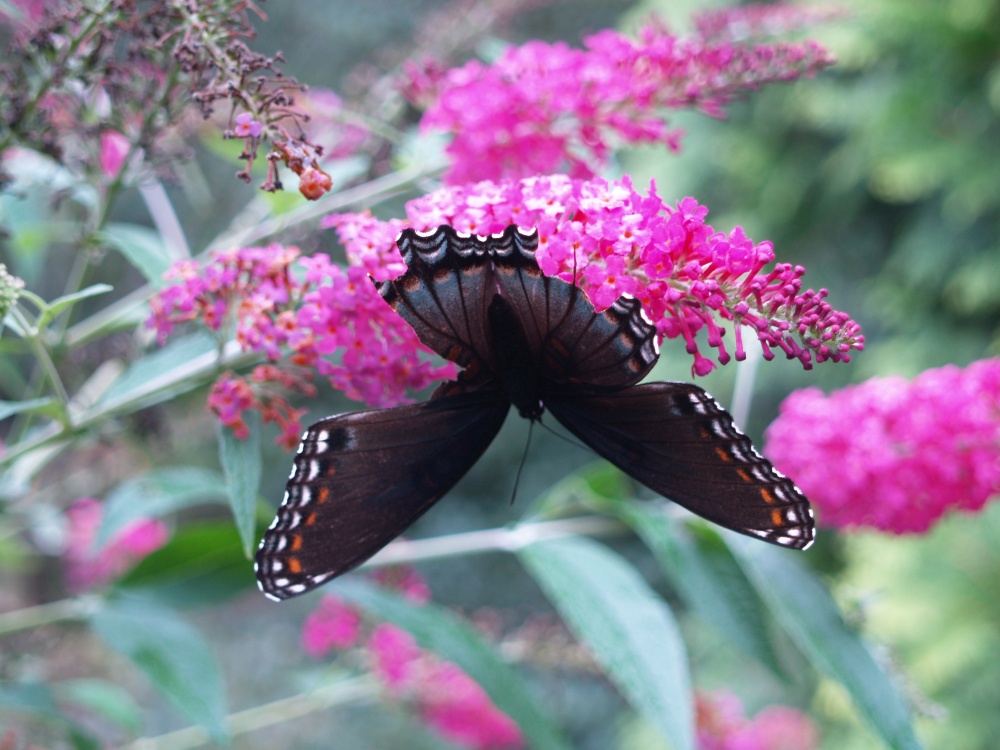
Two ‘Blue Chip’ buddleias died earlier in the spring, and now the beautiful, deep pink ‘Miss Ruby’ (above) has expired. Butterfly bushes are typically vigorous to the point of weediness, and ‘Miss Ruby’ was an exuberant grower (though ‘Blue Chip’ was not). But, the roots of both are susceptible to excess dampness (while other buddleias are more tolerant), and this has done them in.
In the same damp area as ‘Miss Ruby’, a variegated dogwood (Cornus x ‘Celestial Shadow’, below) did not survive, and though the hybrid of Pacific (Cornus nutalli) and Chinese dogwoods (Cornus kousa) should have been more tolerant than our native (Cornus florida), I should have realized from the start that the wet soil in this spot would eventually spell its doom. Fortunately, there are two others of this delightful dogwood in drier parts of the garden.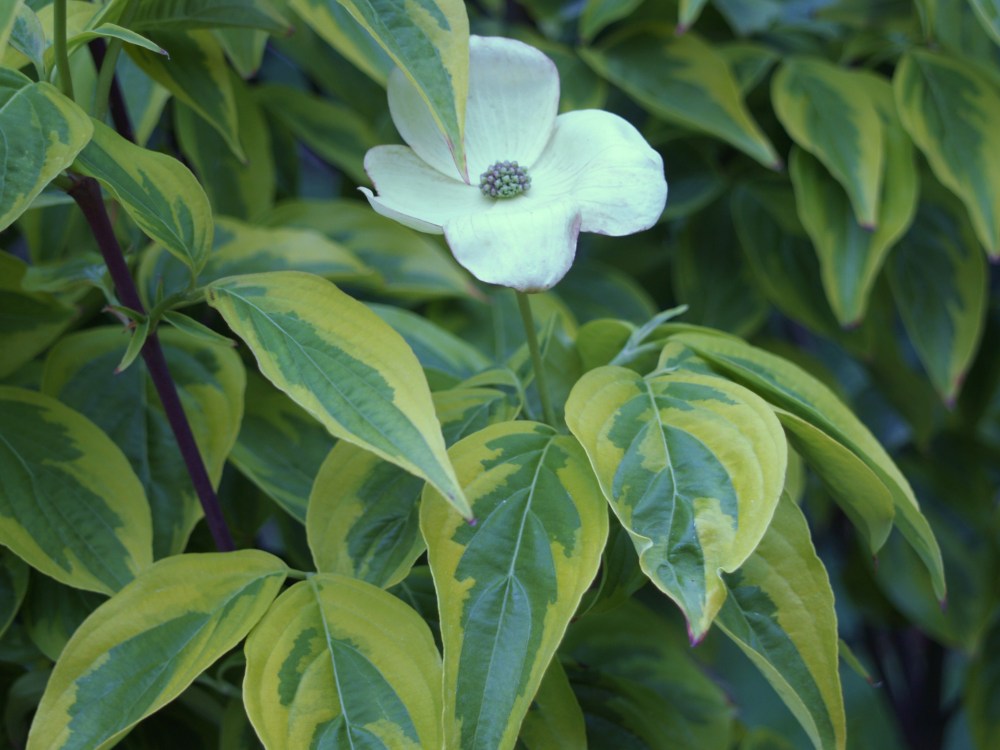
Not far away, a ‘Carol Mackie’ daphne (Daphne burkwoodi ‘Carol Mackie’, below) is struggling, though this area is slightly raised and not so damp. Again, I knew that ‘Carol Mackie’ was intolerant of wet conditions, but many years are not so damp, and the gardener sometimes presumes that the conditions on the day he is planting will last forever. Only a portion of the shrub has died, and if rainfall turns more moderate the daphne might survive.
Surprisingly, the weeds are not too bad, given the abundance of moisture. A few days before returning I imagined that the weeds would be tall and lush, and that many hours would be required to clean things up. So, this was a pleasant discovery, and in this extreme heat after spending two weeks in the luxury of constant air conditioning, I will be overjoyed instead to spend the hours relaxing in the shade.
The planting beds are covered with coarse pine bark chips, and some only by shredded leaves, which decomposes quickly to leave a topdressing of rich soil. The bark nuggets are practical only in that they are long lasting, but they are easily washed onto the lawn in a downpour, so now these must be raked back into the beds. This isn’t a difficult task, but I would be much happier to have nothing at all to do upon returning.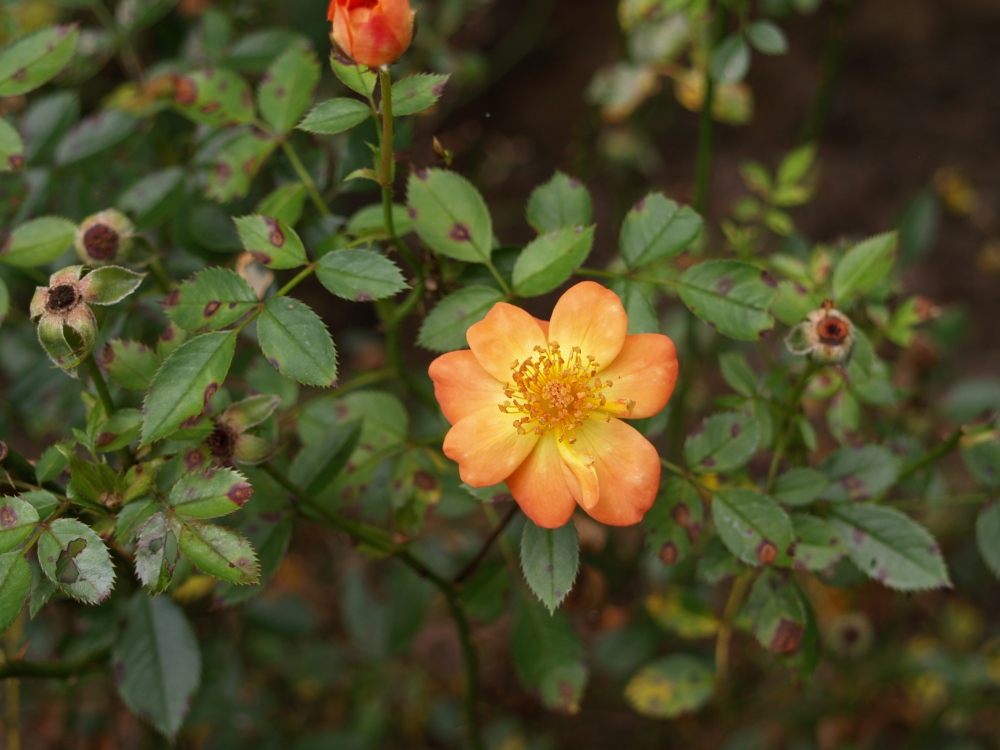
Several shrubs that were not flowering when I left are now blooming, and in the next week I’ll update these. The long flowering Knockout roses are in a rest period, but other roses are blooming, and a few are providing evidence that they are not as easy to care for as their name suggests. ‘Oso Easy Paprika’ (above) and the red ‘Homerun’ have little foliage, and what’s still there is spotted and yellowing, while the Knockouts, Drifts, and the splendid butter yellow ‘Julia Childs’ (below) show little sign of disease. The red Flower Carpet rose, that has typically defoliated by this time in July, is doing better than usual, and perhaps I will not be forced to cut it back by half to rejuvenate it this summer.
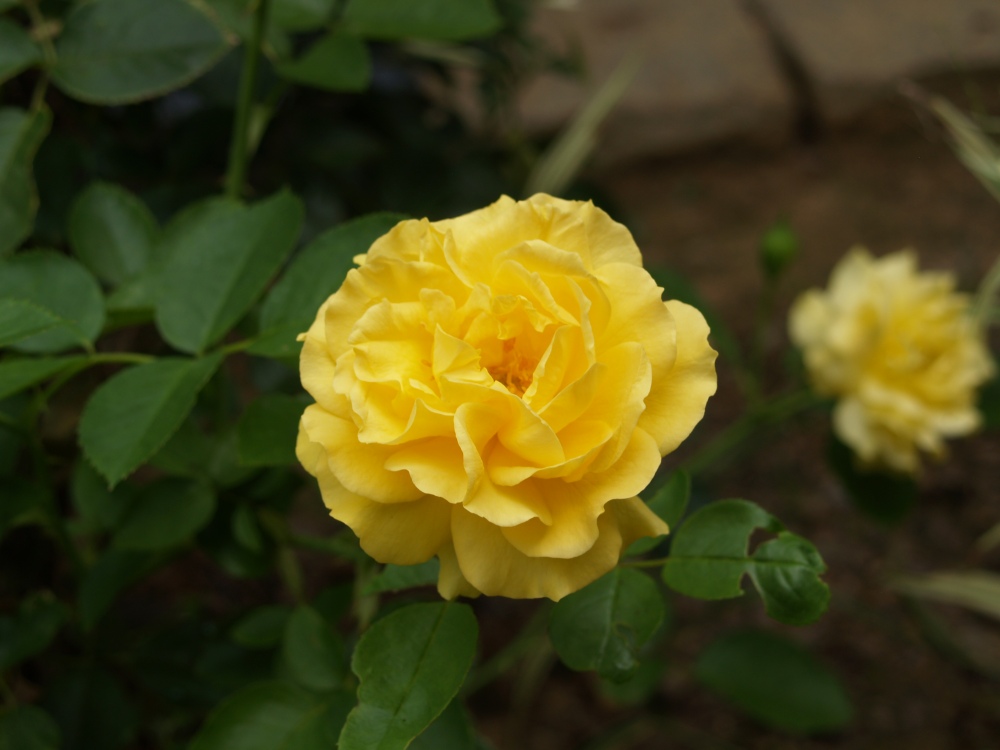
Prior to traveling, the purple Passionflower vine (Passiflora incarnata, below) was flowering, the earliest that I can recall it being in bloom. A few years ago it did not send out any growth until June, and most often the first flowers are in August, but this year there were blooms at the start of July. So, I had no clue that Japanese beetles would find the flowers so attractive, and not a single bloom had a chance to open fully before the beetles ravaged it. A few weeks later, there are no blooms, but also no beetles, so the numerous buds that remain on the luxuriant vine will not be harmed. 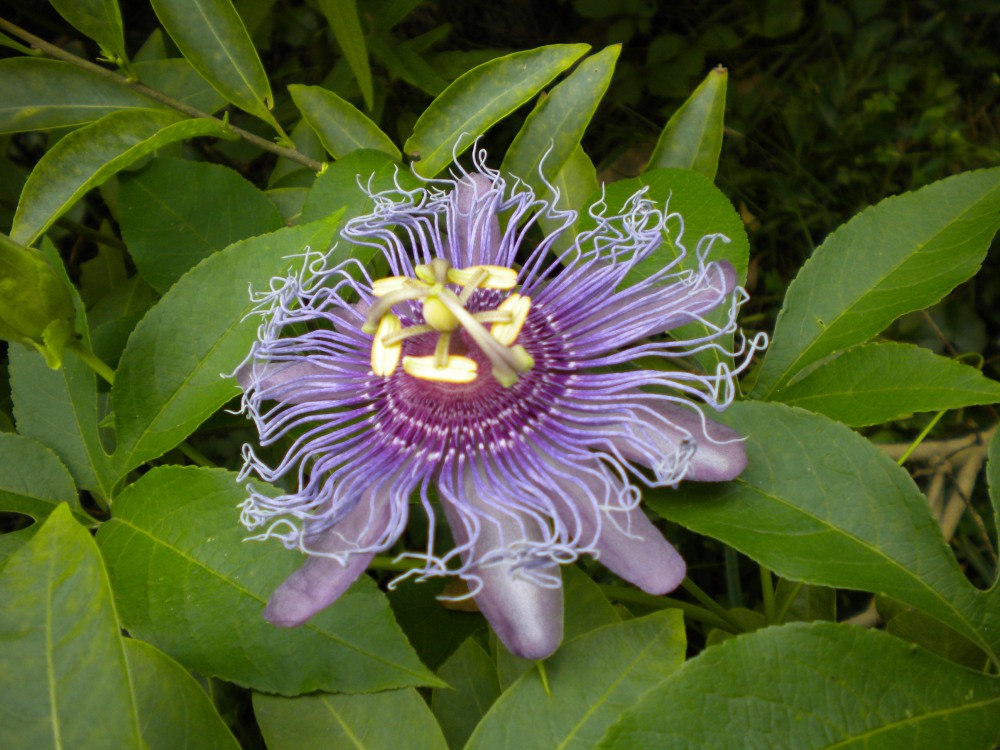
Lovely pics! I need to get a butterfly bush!
GREAT photos and GREAT post!